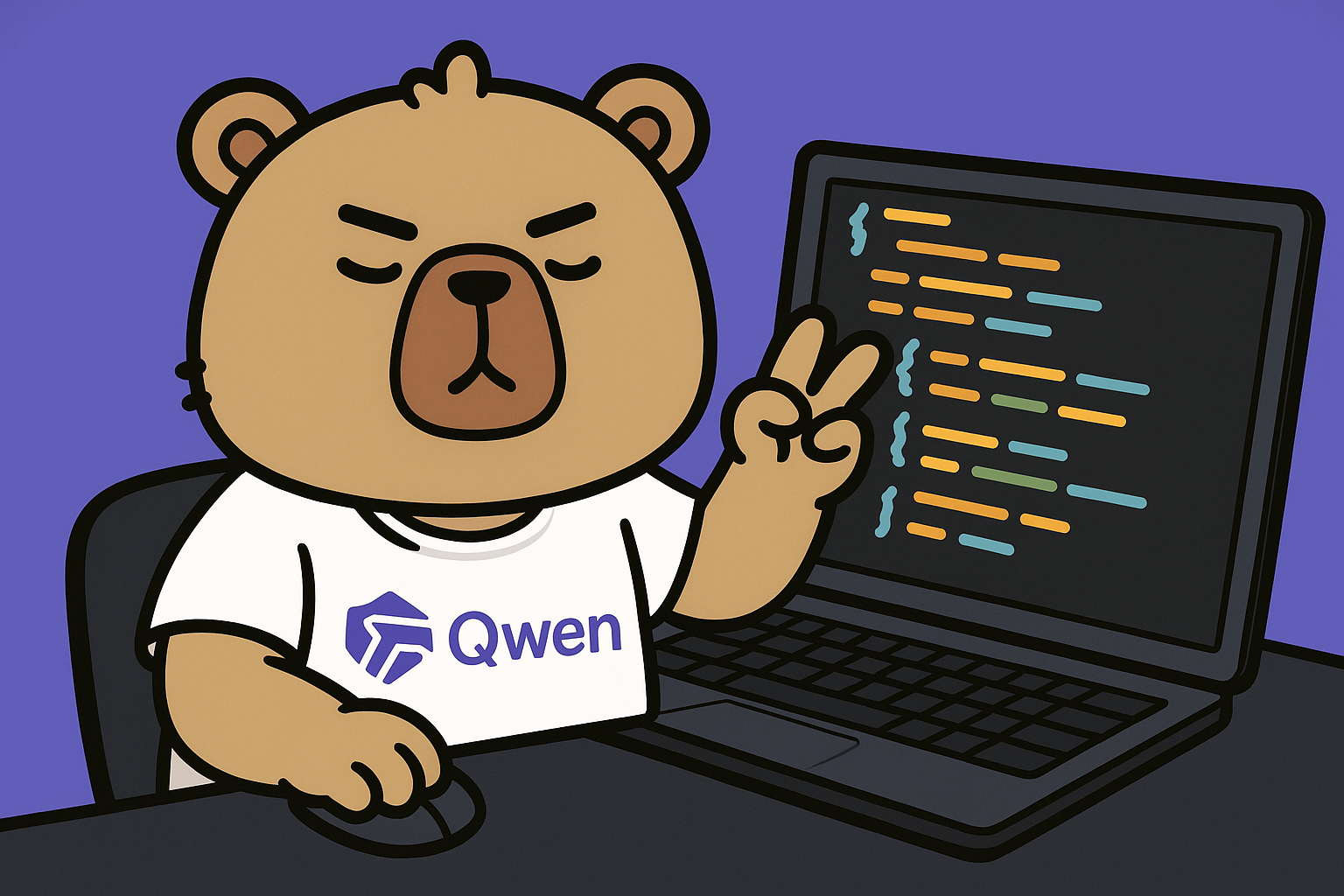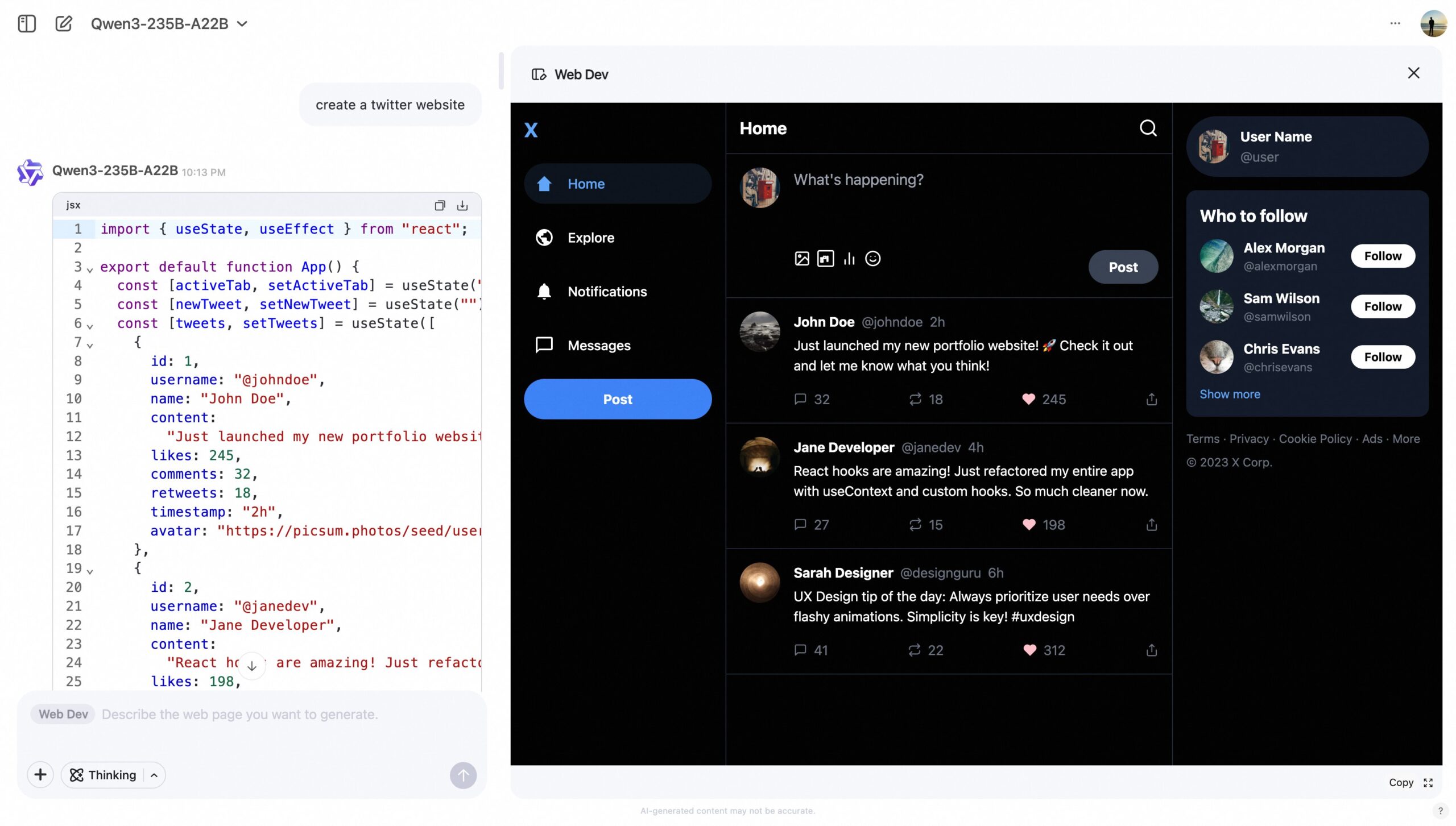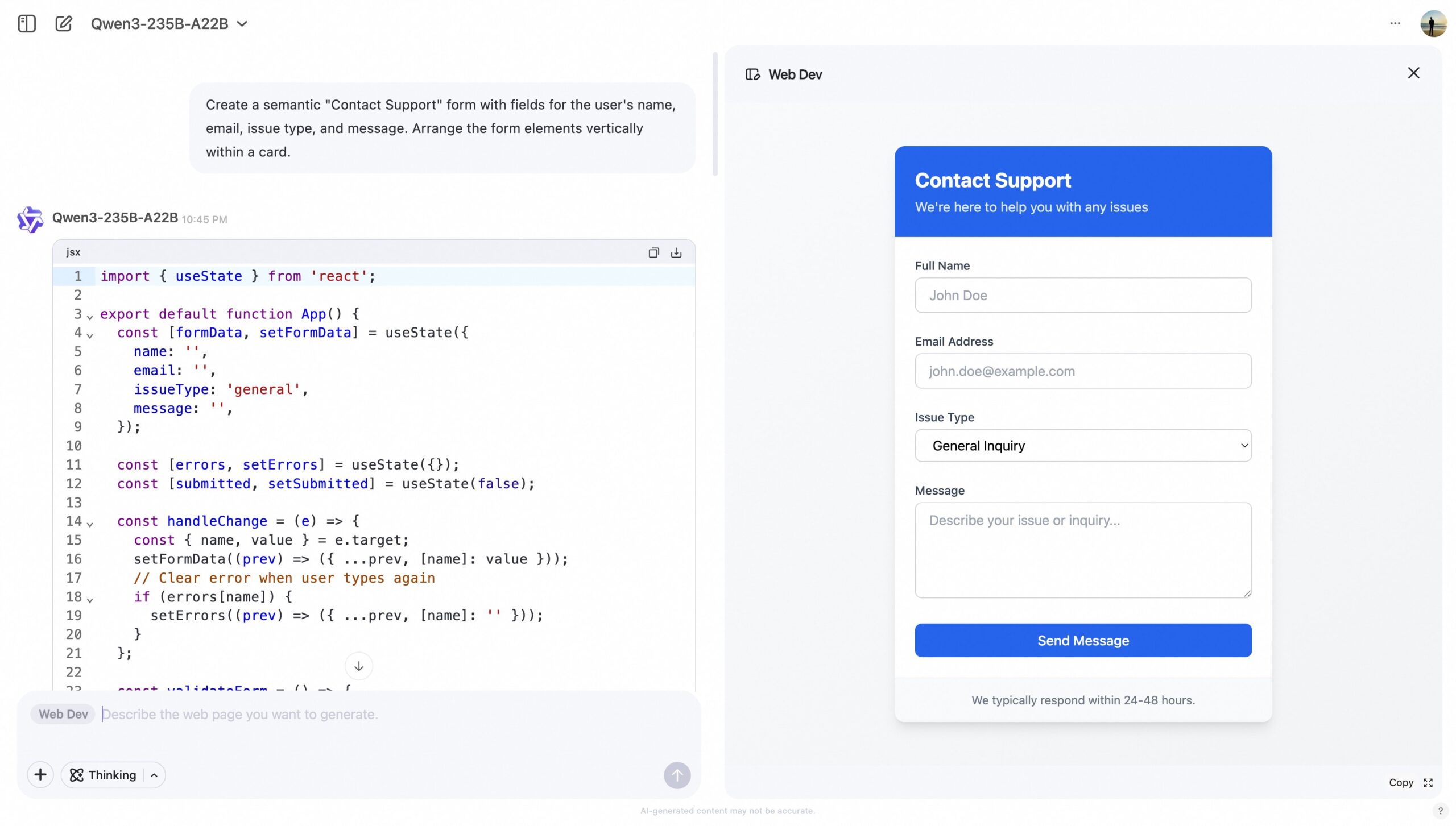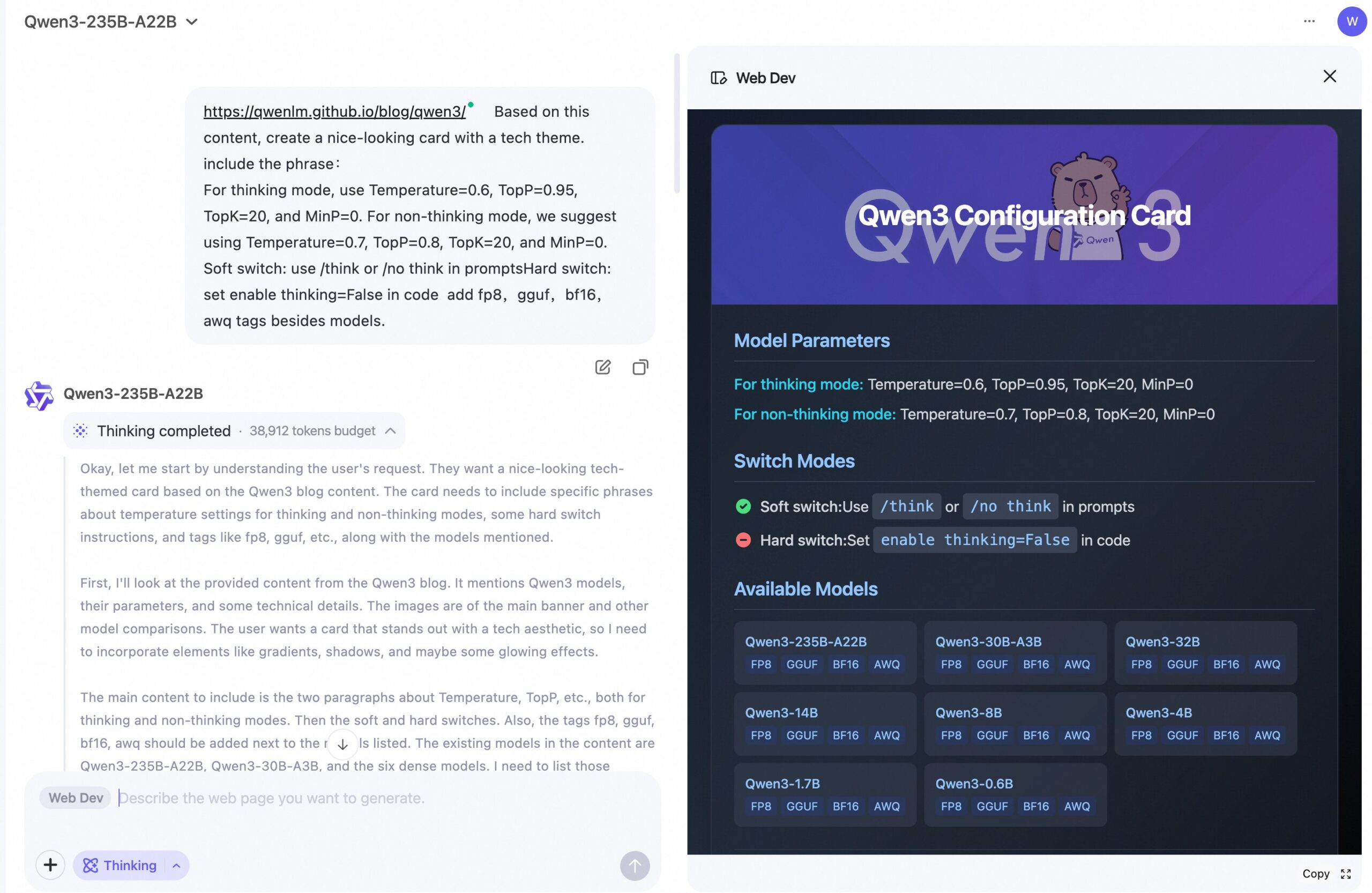Web Dev in Qwen generates full front-end code from just a prompt

Key Points
- Alibaba's new "Web Dev" feature for Qwen Chat allows users to generate fully functional front-end code for websites and apps using simple voice commands, such as "Create a Twitter-like website".
- The tool can generate elements such as contact forms, product pages, and technical visualizations based on user prompts, providing both the appropriate structure and design for the requested components.
- Based on the Qwen3 AI model series, Web Dev positions Alibaba as a direct competitor to comparable AI capabilities from OpenAI, Anthropic and others.
Alibaba's "Web Dev" tool in Qwen turns website and app development into a prompt-based task.
Running inside Qwen Chat, it lets users generate front-end code from a single instruction. A prompt like "Create a Twitter-like website" returns working HTML, CSS, and JavaScript—no coding skills or setup required.

Qwen shows another example with the prompt "Create a semantic contact form with fields for the user's name, email address, problem type, and message." The output is a fully structured contact form with a card-style layout—generated from a single instruction.

Qwen isn't limited to standard website layouts. In one example, it takes a prompt referencing the Qwen3 blog and generates a styled configuration card. The output includes labeled sections for model parameters, reasoning modes, soft and hard switch settings, and model tags like FP8, GGUF, BF16, and AWQ—all presented in a tech-themed layout.

Other prompts focus on more conventional layouts, like "Create a fruit e-commerce website", "Create a product page to introduce a sunscreen product", or "Generate an animation about particles".
"Web Dev" runs inside Qwen Chat and is powered by the Qwen3 language model series, released by Alibaba in April. The lineup includes eight models ranging from 0.5 billion to 235 billion parameters, including two mixture-of-experts models.
According to Alibaba, Qwen3 performs at the level of models like Google's Gemini 2.5-Pro and DeepSeek-R1 in benchmarks for programming, math, and general reasoning—sometimes using fewer parameters.
Qwen3 supports two reasoning modes. "Thinking Mode" walks through intermediate steps, while "Non-Thinking Mode" skips the breakdown and focuses on speed.
With "Web Dev," Alibaba is entering the same product category as OpenAI and Anthropic. OpenAI's Canvas and Code Preview let users generate, run, and edit code or documents directly inside ChatGPT. Anthropic's "Artifacts" offers a similar interface for executing and modifying AI-generated code in real time.
AI News Without the Hype – Curated by Humans
As a THE DECODER subscriber, you get ad-free reading, our weekly AI newsletter, the exclusive "AI Radar" Frontier Report 6× per year, access to comments, and our complete archive.
Subscribe now